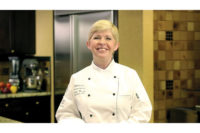First Person
Beverages: A Product Developer’s Perspective
Prepared Foods discusses beverage formulation with Linda Halik, director of R&D and national accounts sales manager at United Citrus Products Corp.





Linda Halik
Education: BS, Chemistry/Biochemistry, Syracuse University and the College of Environmental Science & Forestry at Syracuse; MBA Executive Program, Pace University, New York City
Professional background: Not a traditional food scientist, Halik worked with Kraft General Foods, Westchester County, N.Y., and held a variety of positions -- involving R&D, sales and product management for food and HBC products (retail and foodservice) -- from 1966 to 1992. She worked at Diamond Crystal Specialty Foods from 1992 to 2001, Wilmington, Mass.; and then Florida Crystals, as manager of Desserts and Beverages. She joined United Citrus Products in 2004.
Prepared Foods discusses beverage formulation with Linda Halik, director of R&D and national accounts sales manager at United Citrus Products Corp., Norwood, Mass.
PF: What’s your favorite new flavor blend?
Halik: Although our beverage work is normally on traditional flavor systems, I think my new favorite flavor combinations involve citrus blend flavors with a twist of something new. Varying the blends of lemon, lime and orange -- sometimes with a hint of spice or an exotic fruit flavor, like yuzu or Yumberry, gives a new dimension to typical flavors.
PF: We see that you’re a member of the Research Chefs Association (RCA). Why?
Halik: RCA’s annual meeting is a must for me. It’s where I renew acquaintances; meet the folks I connect with on RCA’s “ListServ,” (internal chat room); and it’s where I learn about new ingredients, techniques or industry issues. Research chefs bring creative artistic expertise to the scientific part of the (product development) puzzle, and this presents a great synergy.
RCA led me to recognize that it’s okay to “color outside the box” with traditional cocktails and other foods and beverages. Chefs often use various unusual flavorings and mouthfeel agents and pair them with standard fare. This gives the familiar a new twist and adds excitement to new foods and beverages. I like using these new restaurant concepts and ideas and applying them to commercial products with the same type of ingenuity. Recently, people are talking about adding spices or smoke flavor to cocktails.
PF: Can you share a success story from the past 18 months?
Halik: United Citrus was asked to develop a commercial liquid cocktail mix and to use a standard recipe as a target. We have done this kind of work many times but found that developing a liquid mix for a Pisco Sour was particularly challenging. Pisco Sour is a labor-intensive cocktail that’s popular in South American cuisine, particularly in Chili and Peru. The typical “sour” varies by region and generally is made with fresh-squeezed Key limes, syrup, ice and egg whites for a large, foamy head. Sometimes, they use some warming spices and Angostura bitters.
After several renditions, we received client approval. The concept is to make this product available in the U.S., and increase Pisco liquor sales with a labor-saving mix that provides the authentic taste and appearance of a “scratch” recipe. It was challenging to identify the best Key lime flavor and develop a foamy head with a product that does not use egg whites -- and can go through production. We also had to find the right blend and levels of warming spices for flavor retention in the liquid cocktail system, in a cocktail that was new to our taste. This is a potent but great-tasting cocktail!
PF: What’s one of the most challenging aspects of product formulation?
Halik: It’s to develop “natural” products while we meet a client’s cost criteria, as well as their requirements for taste, appearance and stability. Many customers want their current items be “all natural” with all the same cost, color, stability and flavor profiles; the same as “un-natural” counterparts. The concept is great, but delivery often is next to impossible.
PF: How could suppliers help you?
Halik: We’re looking for more reasonably priced natural ingredients, including preservatives. We’re also looking for more stable natural flavors and colors, as well as better-tasting, natural, high-intensity sweeteners. These types of improvements would benefit the next gen-eration of items. We are seeing small steps of improvement, but nothing at the pace to keep up with demand.
Like this article?
You may like this one as well:
Looking for a reprint of this article?
From high-res PDFs to custom plaques, order your copy today!







